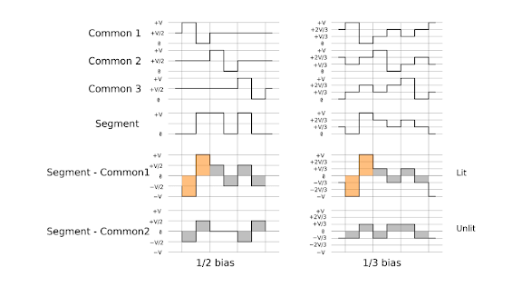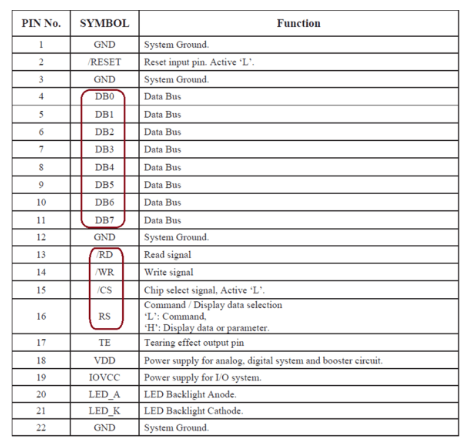
Fig. 1 Connection Between MCU to LCD
LCD can’t be driven with DC (Direct Current), it has to be driven with AC (Alternative Current) and the overall current has to be ZERO. Otherwise, the Liquid Crystal Material will be damaged sooner or later.

Fig. 2 LCD Driving Waveform
There are two types of Driver IC’s, Common Drivers and Segment Drivers. Common Drivers output signals to create the rows or numbers of lines. The Segment Drivers output the necessary signals to create the characters or columns.
The Controller IC receives data written in ASCII or JIS code from the MPU and stores this data in RAM. This data is then converted into serial character patterns and transferred to the LCD driver IC.
Drive/Controller IC is probably the most commonly found in a graphics module. This IC receives data from the MPU and stores it in RAM. Also, it accepts commands directly from the MPU for both the common and segment drivers.
MCU interface include two types, 6800 and 8080. 8080 is the much more popular than 6800. Generally, MCU interface consist of 4/8/9/16bits data (like DB0, DB1, , , DB7; Note: 8bits is the most popular bits width), CS (chip select), RS (data register or instruction register select), RD (read enable), WR (write enable).
PROs: Simple
CONs: Need RAM, Speed is limited.
Used in Mono character, graphic, small TFT (smaller than 3.5”)

Fig. 3 MCU/Parallel Interface
For MCU Interface related products, you can also find it here.